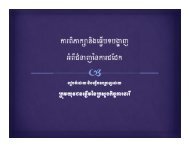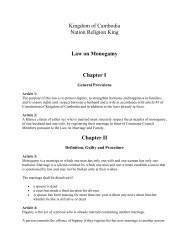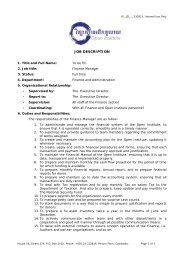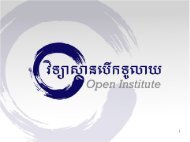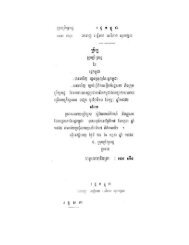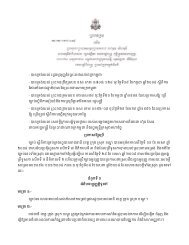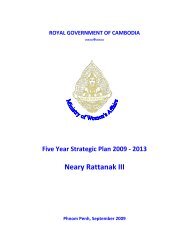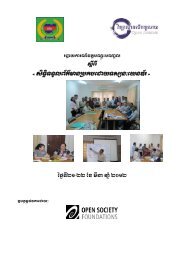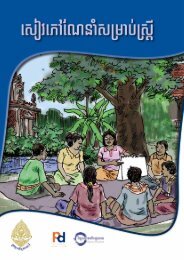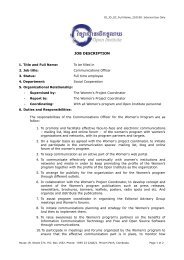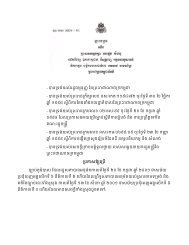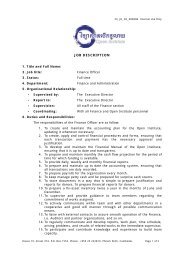Education Education An approach to some basic Indicators for ...
Education Education An approach to some basic Indicators for ...
Education Education An approach to some basic Indicators for ...
You also want an ePaper? Increase the reach of your titles
YUMPU automatically turns print PDFs into web optimized ePapers that Google loves.
38 Catalog of Indica<strong>to</strong>rs <strong>Education</strong> Priority: Yes Indica<strong>to</strong>r developed: Yes Local/International: Local and International Kind of indica<strong>to</strong>r: On going Data source/s: School register, School survey or census <strong>for</strong> data on enrolment by age Population censuses or estimates <strong>for</strong> school-‐age population normally obtained from the central statistical office Challenges: For tertiary education, this indica<strong>to</strong>r is not pertinent because of the difficulties in determining an appropriate age group due <strong>to</strong> the wide variations in the duration of programmes at this level of education. As regards primary and secondary education, difficulties may arise when calculating an NER that <strong>approach</strong>es 100% if: 1. the reference date <strong>for</strong> entry <strong>to</strong> primary education does not coincide with the birth dates of all of the cohort eligible <strong>to</strong> enrol at this level of education; 2. a significant portion of the population starts primary school earlier than the prescribed age and consequently finishes earlier as well; 3. there is an increase in the entrance age <strong>to</strong> primary education but the duration remains unchanged. N.B. Although the NER cannot exceed 100%, values up <strong>to</strong> 105% have been obtained reflecting inconsistencies in the enrolment and/or population data. Linked <strong>to</strong> policy: National <strong>Education</strong>al plan of all areas of education (ESP, Non-‐Formal <strong>Education</strong>) Other comments: A high NER denotes a high degree of coverage <strong>for</strong> the official school-‐age population. The theoretical maximum value is 100%. Increasing trends can be considered as reflecting improving coverage at the specified level of education. When the NER is compared with the GER, the difference between the two highlights the incidence of under-‐aged and over-‐aged enrolment. If the NER is below 100%, then the complement, i.e. the difference with 100%, provides a measure of the proportion of children not enrolled at the specified level of education. However, since <strong>some</strong> of these children/youth could be enrolled at other levels of education, this difference should in no way be considered as indicating the percentage of students not enrolled. To measure universal primary education, <strong>for</strong> example, adjusted primary NER is calculated on the basis of the percentage of children in the official primary school age range who are enrolled in either primary or secondary education. A more precise complementary indica<strong>to</strong>r is the age-‐specific enrolment ratio (ASER) which shows the participation in education of the population of each particular age, regardless of the level of education. The relative concentration of students in particular programmes (long/short programmes) or levels is likely <strong>to</strong> be driven by job opportunities related <strong>to</strong> those levels. It also reflects capacities and policies <strong>for</strong> the development of a particular ISCED level. Relative concentration of students in particular fields of education depicts on the one hand high preference and capacity, and on the other hand may reflect job opportunities as well as




